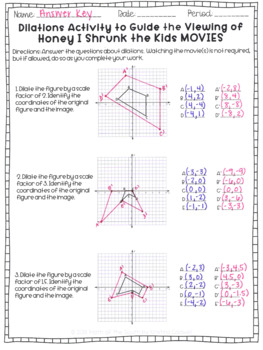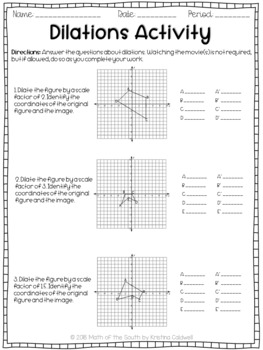Dilations Activity to Guide the Viewing of Honey, I Shrunk the Kids MOVIES
- PDF
Description
Need an activity for the days following your transformations unit? What about after standardized testing at the end of the school year? Look no further – with this activity you can find content-rich dilations questions that guide the viewing of the movie franchise Honey, I Shrunk the Kids! Great for 8th grade math students or higher!
♦MORE ABOUT THIS PRODUCT♦
The Dilations Activity to Guide the Viewing of any Honey, I Shrunk the Kids Movies is the perfect activity to expose your students to dilations in REAL LIFE!
The students are not required to watch any of the movies in order to complete the activity. Also included is a version of the activity that does not have the movie title at the top.
This activity can be used in any 8th grade math classroom or higher. The best thing about this activity is that there is NO PREP NEEDED! Simply print and copy for your students!
↝YOU MAY ALSO BE INTERESTED IN…↜
Related Products
⭐ Budget & Personal Finance Project : A Money Reality Check
⭐ ABC Book - FULLY EDITABLE ANY SUBJECT ANY GRADE LEVEL
⭐ Math Movie Questions to Guide the Viewing of Home Alone
♥ WANT MORE FROM MATH OF THE SOUTH BY KRISTINA CALDWELL? ♥
⇔ Click on the ★ above to follow my store!





